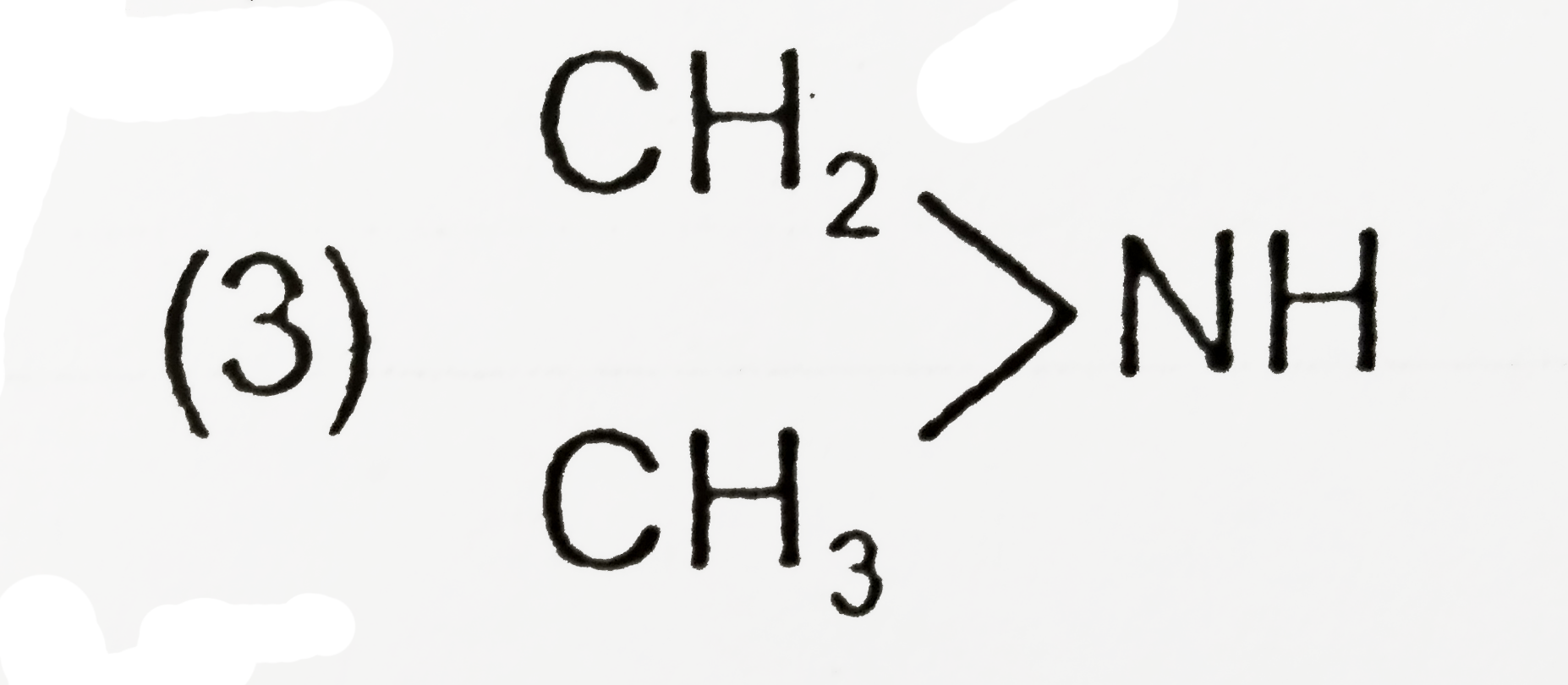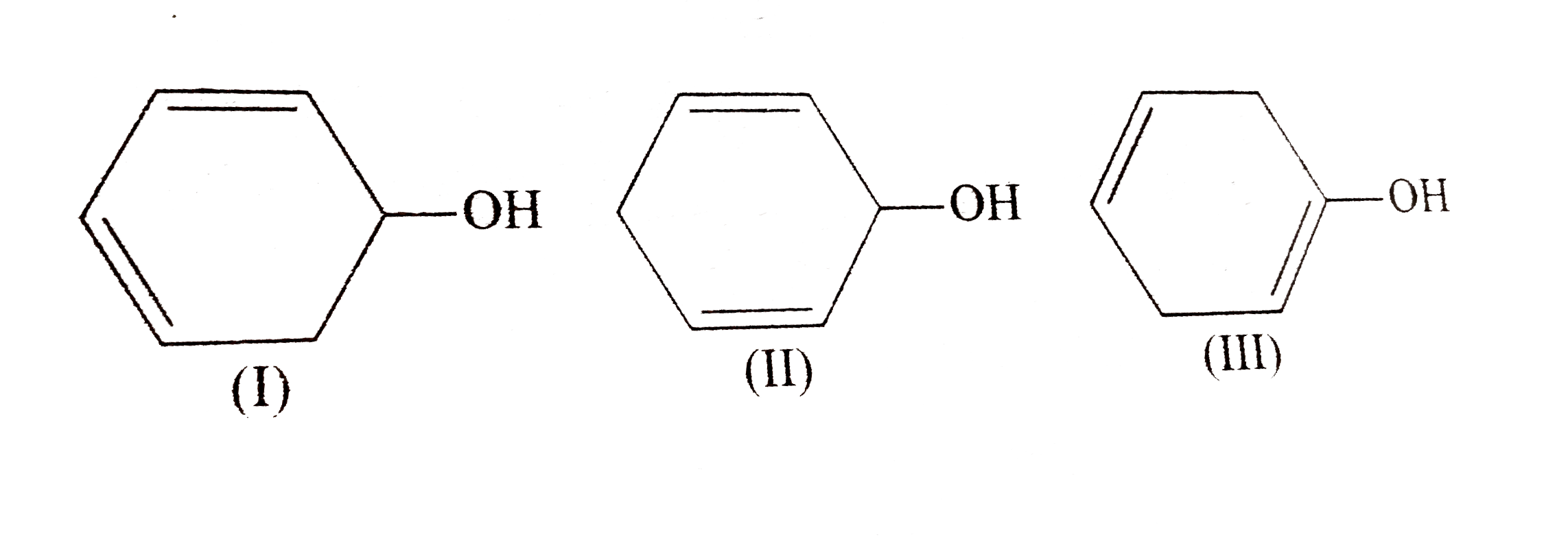Which one is most volatile?
CH3CH2CH2NH2
(CH3)3N

CH3OH
The correct Answer is:B
To determine which compound is the most volatile among the given options, we need to analyze the volatility of each compound based on their ability to form hydrogen bonds. Volatility refers to the tendency of a substance to vaporize, and it is influenced by intermolecular forces, particularly hydrogen bonding.
1. Understanding Volatility:
- Volatility is the tendency of a substance to change into a gaseous state. The more volatile a substance is, the easier it transitions to gas.
2. Identifying Hydrogen Bonding:
- Compounds that can form hydrogen bonds tend to have lower volatility because hydrogen bonding creates stronger intermolecular attractions, making it harder for the molecules to escape into the gas phase.
3. Analyzing Each Option:
- Let's denote the options as follows:
- Option A: CH3CH2CH2NH2 (a primary amine)
- Option B: (Tertiary amine, e.g., (CH3)3N)
- Option C: CH3OH (methanol)
- Option D: (Another compound, e.g., CH3NH2)
4. Evaluating Each Compound:
- Option A (Primary Amine): Can form hydrogen bonds with two hydrogen atoms. This results in stronger intermolecular forces, leading to lower volatility.
- Option B (Tertiary Amine): Lacks hydrogen atoms attached to nitrogen, so it cannot form hydrogen bonds as effectively. This results in higher volatility compared to primary amines.
- Option C (Methanol): Can form hydrogen bonds due to the presence of an -OH group. This results in lower volatility due to strong intermolecular forces.
- Option D (Another Amine): Depending on its structure, it may have varying hydrogen bonding capabilities.
5. Conclusion:
- Among the options, the tertiary amine (Option B) is the most volatile because it has the least ability to form hydrogen bonds, allowing it to vaporize more easily compared to the others.
Final Answer:
The most volatile compound is the tertiary amine (Option B).
- Volatility is the tendency of a substance to change into a gaseous state. The more volatile a substance is, the easier it transitions to gas.
- Compounds that can form hydrogen bonds tend to have lower volatility because hydrogen bonding creates stronger intermolecular attractions, making it harder for the molecules to escape into the gas phase.
- Let's denote the options as follows:
- Option A: CH3CH2CH2NH2 (a primary amine)
- Option B: (Tertiary amine, e.g., (CH3)3N)
- Option C: CH3OH (methanol)
- Option D: (Another compound, e.g., CH3NH2)
- Option A (Primary Amine): Can form hydrogen bonds with two hydrogen atoms. This results in stronger intermolecular forces, leading to lower volatility.
- Option B (Tertiary Amine): Lacks hydrogen atoms attached to nitrogen, so it cannot form hydrogen bonds as effectively. This results in higher volatility compared to primary amines.
- Option C (Methanol): Can form hydrogen bonds due to the presence of an -OH group. This results in lower volatility due to strong intermolecular forces.
- Option D (Another Amine): Depending on its structure, it may have varying hydrogen bonding capabilities.
- Among the options, the tertiary amine (Option B) is the most volatile because it has the least ability to form hydrogen bonds, allowing it to vaporize more easily compared to the others.
The most volatile compound is the tertiary amine (Option B).
Topper's Solved these Questions
- AMINES BOOK - AAKASH INSTITUTE ENGLISHCHAPTER - AMINES EXERCISE - Assignment Section B (Objective Type Questions) one option is correct
23 Videos
- AMINES BOOK - AAKASH INSTITUTE ENGLISHCHAPTER - AMINES EXERCISE - Assignment Section C (Objective type questions more than one options are correct)
12 Videos
- AMINES BOOK - AAKASH INSTITUTE ENGLISHCHAPTER - AMINES EXERCISE - Try Yourself
10 Videos
- ALDEHYDES, KETONES AND CARBOXYLIC ACIDS BOOK - AAKASH INSTITUTE ENGLISHCHAPTER - ALDEHYDES, KETONES AND CARBOXYLIC ACIDS EXERCISE - Try Yourself
20 Videos
- BIOMOLECULESBOOK - AAKASH INSTITUTE ENGLISHCHAPTER - BIOMOLECULESEXERCISE - EXERCISE (ASSIGNMENT) SECTION - D Assertion - Reason Type Questions
5 Videos
Similar Questions
Which is the most volatile of the given compounds?
View SolutionWhich one is most reactive towards AgNO3
View SolutionWhich one is most reactive towards SN1 reaction?
View SolutionWhich one is most stable ?
View SolutionWhich one is most stable to heat ?
View SolutionGive important theories of classification. Which one is most suitable and why?
View SolutionWhich compound is volatile on heating?
View SolutionWhich one is the most toxic ?
View SolutionWhich one is the most easily dehydrated ?

View SolutionWhich one is most efficient imbibant ?
View Solution
